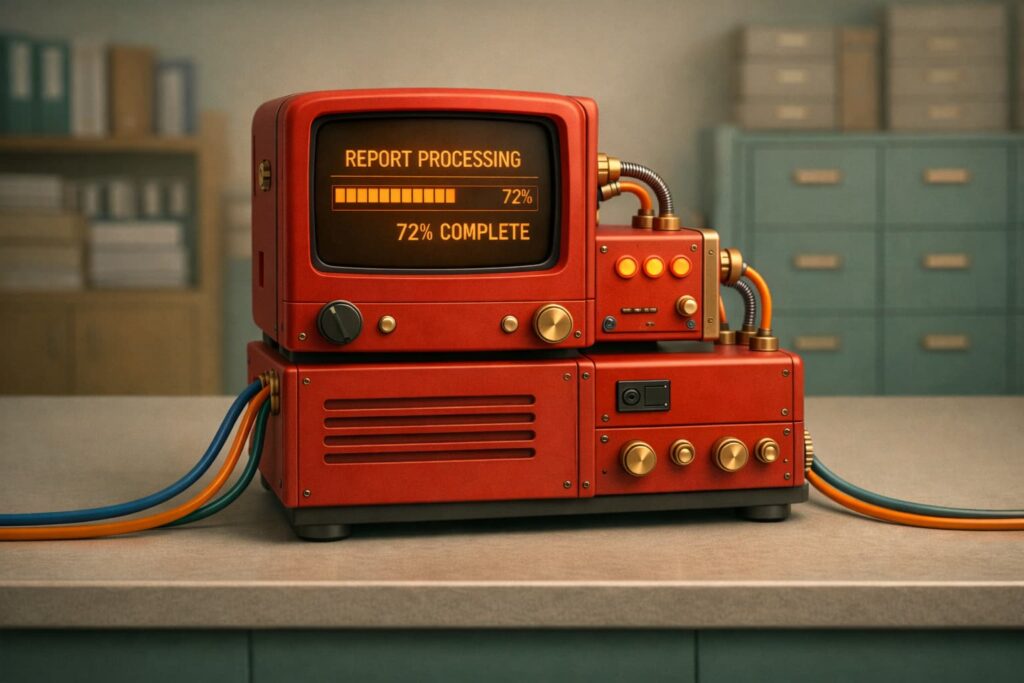This post is part of a series based on discussions with senior insurance leaders, including Arno de Wever, Head of Commercial P&C Insurance at Amazon Web Services (AWS). A recurring barrier they see is clear: legacy systems continue to hold back AI adoption. For COOs, the challenge isn’t whether AI has potential, but whether there is AI readiness in insurance organisations so that it’s structurally possible to implement new ways of working.
A COO’s reality with AI readiness in insurance: hitting the wall with legacy
Picture a COO eager to automate submission triage. The AI solution is ready, the business case is solid, and underwriters are keen to adopt it. Yet the critical client and risk data sits locked inside a policy administration system built decades ago, with no modern interfaces.
This is a common operational barrier. Strategies are clear and technologies exist, but legacy systems make execution slow and complex. Full migration programs often take three to five years — far too long when the market is softening and margins are under pressure.
Governance gaps that keep AI stuck in pilot mode
Legacy technology isn’t the only obstacle. Governance often creates its own roadblocks. Many insurers lack well-defined frameworks for AI adoption. Dedicated “AI councils” sometimes stall projects due to limited understanding of the risks, while workers’ councils may assume that automation equates to job cuts. These dynamics add delays, even when the business case is sound.
A practical playbook for AI readiness in insurance
AI readiness in insurance doesn’t mean ripping out legacy overnight. It means bridging the gap with pragmatic steps:
- Point Solutions First → Start with targeted workflows (e.g., triage, summarisation) that run alongside legacy platforms.
- Data Foundation → Build a central data layer that breaks down silos and delivers clean inputs to AI systems.
- Human-in-the-Loop → Keep underwriters and claims handlers as final approvers to build trust and accountability.
- Change Management → Engage workers’ councils early, positioning AI as augmentation of human roles rather than replacement.
What COOs gain from bridging legacy and innovation
- Quick wins delivered while migrations are still underway.
- Reduced risk through guardrails and audit trails that ensure compliance.
- Cultural buy-in by presenting AI as a co-pilot that empowers teams.
- Future-proofing with an architecture ready for long-term adoption and scale.
These clear gains are a great reason to promote AI readiness in insurance organizations.
Future-proofing operations without waiting for migration
Legacy systems and governance challenges may feel like immovable obstacles, but they don’t have to be. For COOs, AI readiness means laying the foundation now: delivering immediate value today while building the capabilities for tomorrow’s transformation.
Want to see this in action? Download our COO guide on Operational Excellence Through Proven AI or book a free consultation meeting !
Take the next step
Discover solutions, customer success stories, and events on our dedicated Insurance page.


